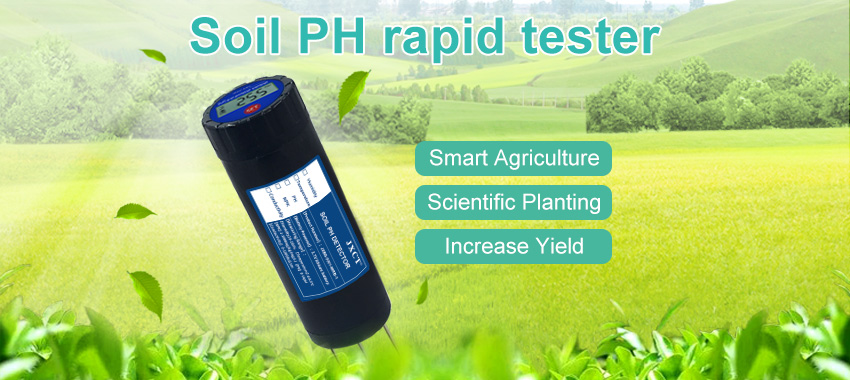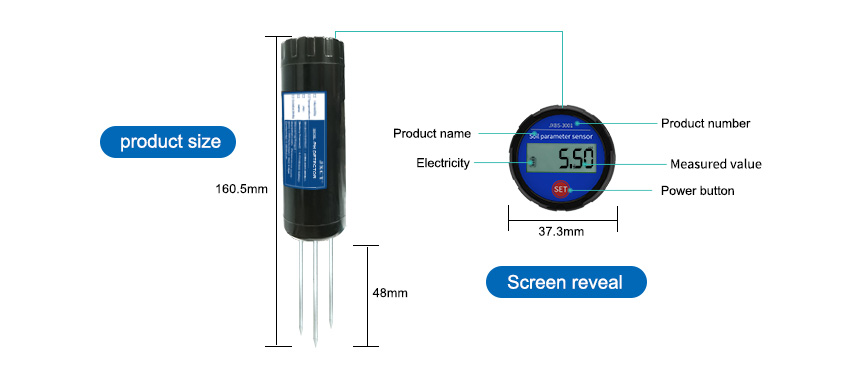Precision agriculture has revolutionized the way we approach farming by enabling farmers to make data-driven decisions for optimal crop growth and resource management. A key component of precision agriculture is soil sensor technology, which provides valuable insights into soil conditions and helps farmers optimize irrigation, fertilization, and other farming practices. This article explores the potential of soil sensor technology in unlocking the true potential of precision agriculture, highlighting its benefits, applications, challenges, and future prospects.

Understanding Soil Health:
Soil sensors play a crucial role in assessing soil health and fertility. By measuring key parameters such as moisture content, pH levels, nutrient concentrations, and temperature, soil sensors provide farmers with real-time data on the condition and quality of their soil. This information allows farmers to understand the specific needs of their crops and make informed decisions about soil amendments, fertilizer application, and pest control.
Optimizing Irrigation:
Efficient water management is a critical aspect of sustainable agriculture. Soil sensors help farmers optimize irrigation by providing accurate data on soil moisture levels. Farmers can monitor soil moisture in different field zones and adjust irrigation schedules accordingly, ensuring that crops receive the right amount of water at the right time. This targeted approach reduces water wastage, minimizes runoff and leaching, and promotes water conservation.
Precision Fertilizer Application:
Applying fertilizers precisely where they are needed is essential for maximizing crop yield and minimizing environmental impact. Soil sensors provide valuable insights into nutrient levels in the soil, enabling farmers to tailor fertilizer application to meet specific crop requirements. By using soil sensor data, farmers can apply fertilizers in the right amounts and at the right locations, reducing fertilizer waste, preventing nutrient runoff, and minimizing the risk of groundwater contamination.
Managing Soil pH:
Soil pH affects nutrient availability and microbial activity in the soil. Soil sensors can measure pH levels accurately, allowing farmers to monitor and manage soil acidity or alkalinity. By adjusting pH levels through lime or other amendments, farmers can create optimal growing conditions for their crops. This precision management of soil pH helps improve nutrient uptake, enhances crop productivity, and reduces the need for excessive fertilizer application.
Detecting Soil Compaction:
Soil compaction can significantly impact crop growth by impeding root development and reducing water and nutrient infiltration. Soil sensors equipped with penetrometers can measure soil compaction levels, providing farmers with insights into areas where soil structure needs improvement. With this information, farmers can implement appropriate soil aeration techniques, such as deep tillage or subsoiling, to alleviate compaction and promote healthy root growth.

Monitoring Soil Temperature:
Soil temperature plays a vital role in seed germination, root growth, and microbial activity. Soil sensors equipped with temperature probes enable farmers to monitor soil temperature variations across their fields. This information helps farmers make informed decisions about planting times, crop selection, and management practices. By optimizing soil temperature, farmers can enhance crop establishment, reduce plant stress, and improve overall productivity.
Integrating Sensor Data with Precision Farming Systems:
Soil sensor technology can be integrated with other precision farming systems, such as remote sensing, GPS, and yield monitors, to create comprehensive decision support tools. By combining data from multiple sources, farmers can gain a holistic understanding of their fields and make informed decisions based on real-time information. This integration improves the accuracy of crop management practices, leading to increased yields, reduced input costs, and improved resource efficiency.
Challenges and Future Prospects:
While soil sensor technology holds immense promise, there are several challenges that need to be addressed for its widespread adoption. These challenges include sensor calibration, data management and interpretation, cost-effectiveness, and ensuring compatibility across different platforms and equipment. However, advancements in sensor technology, machine learning, and data analytics are rapidly addressing these challenges. Future prospects for soil sensor technology include the development of wireless and IoT-enabled sensor networks, improved data integration and interoperability, and enhanced decision support systems.
Conclusion:
Soil sensor technology is a game-changer in precision agriculture, unlocking the true potential of sustainable and efficient farming practices. By providing real-time and accurate data on soil conditions, soil sensors empower farmers to optimize irrigation, fertilizer application, and other management practices, leading to increased yields, reduced costs, and improved environmental sustainability. As technology continues to evolve, soil sensor networks will become an integral part of precision farming systems, revolutionizing the way we approach agriculture and ensuring food security for future generations.







